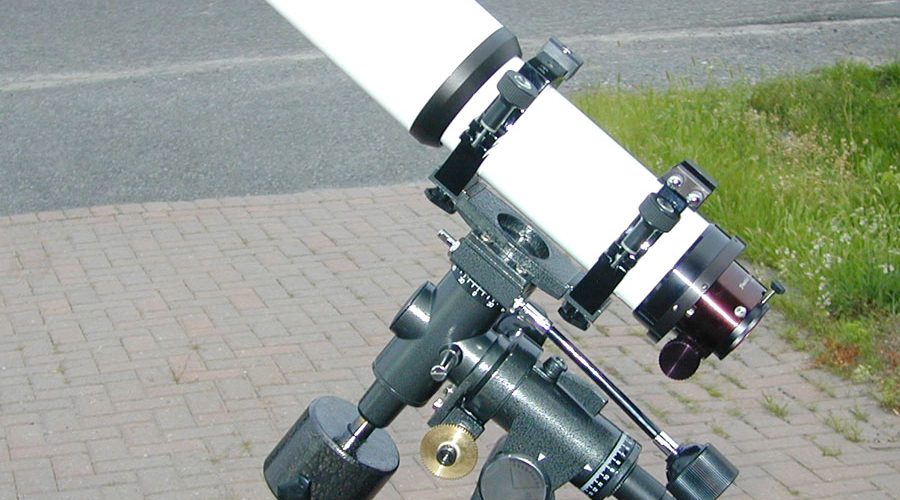It is enough to have spent a few seconds on the eyepiece of a so-called azimuthal instrument, mounted on a tripod, to be aware of the sidereal movement which causes the whole celestial vault in the opposite direction to the rotation of the Earth, causing all the stars from east to west. With manual retraction of the yarn in both directions, it seemed quite obvious that stellar tracking under these conditions would be precarious and tedious. Astronomers then devised an ingenious system to neutralize this yarn effect: the equatorial mount.
During the night, in the space of half an hour everyone must have noticed that the whole sky seems to turn around the Polar star. Yes, apparently “the stars are moving!”. With a little attention one discovers that the whole celestial vault seems to turn around an axis which is in the extension of the axis of rotation of the Earth. Depending on the latitude, this axis will be more or more inclined and even horizontal to the equator, where the stars rise perpendicularly above the eastern horizon and where the last crescent Moon takes the form of a boat.
The ingenious idea discovered in the nineteenth century was to tilt the axis of elevation of the telescope mount to the latitude of the place. In this position, the instrument is oriented parallel to the axis of rotation of the Earth, around which seems to turn the whole sky. It is said that it is “mounted in equatorial” or fixed on an equatorial mount. The elevation axis thus inclined becomes the right ascension axis (or time axis because divided into 24 hours) while the axis of azimuth, perpendicular to it, ensures the pointing in the other direction.
It is called the declination axis and is graduated from 0 to 360 °. Of course these two axes are mobile, making accessible any point of the sky visible above the horizon. The declination of the star – its height relative to the celestial equator – remaining fixed, it will be sufficient to slowly rotate the telescope around the right ascension axis to follow the star during the night. If the instrument is perfectly oriented towards the celestial pole, the pursuit of a star will be done without any catch-up in declination.
Thus, by slow rotation, making a turn in 24 hours, the equatorial mount will compensate the rotation of the Earth. There are several variants of this ingenious invention including the cradle mount, the fork and the equatorial plane. This system is often automated by means of small motors with reduced steps fixed on the gears of the axes.

i
a
7
asdas
Tttt
gg